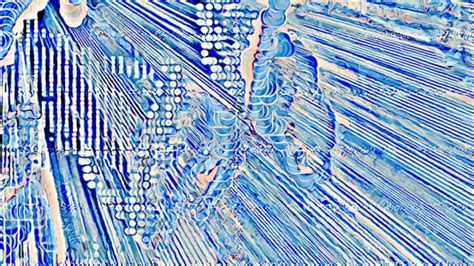Generative Algorithms and Their Impact on NFT Design
In the world of digital art, non-functional tokens (NFTs) are becoming increasingly popular, with artists, collectors, and enthusiasts eager to own unique and rare digital assets. One of the key technologies driving this trend is generative algorithms, which allow machines to create original content in a variety of forms, from visual art to music and even NFT design.
What are generative algorithms?

Generative algorithms are computer programs that use mathematical methods to generate new data or objects based on existing patterns, rules, or constraints. These algorithms can be trained on large datasets, allowing them to learn from patterns and relationships in the data. By applying generative algorithms to a variety of fields, artists and designers can create innovative and often unprecedented works of art.
NFT Design: The New Frontier
Artists are increasingly using generative algorithms to create unique NFTs that capture the essence of digital art. These designs can range from simple yet striking patterns to complex and intricate compositions created by the power of AI.
One of the most prominent examples is the work of artist and designer Olafur Eliasson. In 2013, Eliasson collaborated with algorithmic composer Karlheinz Stockhausen on the project “Information Art.” The duo used generative algorithms to create immersive digital environments that responded to sound waves in real time.
Impact on NFT Design
Generative algorithms have had a significant impact on NFT design. Using these technologies, artists and designers can:
- Create unique and one-of-a-kind designs: Generative algorithms allow artists to create complex patterns, shapes, and forms that cannot be recreated by hand.
- Simplification of the design process: Artists no longer need to spend hours manually creating each NFT piece, as generative algorithms can produce high-quality images in minutes or seconds.
- Increased creativity and variety: Generative algorithms provide endless possibilities for artistic expression, making NFT designs more diverse and innovative.
Applications in digital art
Generative algorithms are not limited to traditional digital art. They have also been used in:
- Music composition: Music created by artificial intelligence is becoming increasingly popular, with artists such as Aphex Twin and Squarepusher incorporating generative algorithms into their work.
- Visual effects: Generative algorithms can be used to create realistic environments, characters, and special effects in films, video games, and virtual reality.
- Fashion Design
: AI-powered design tools are being used to create unique and futuristic fashion designs for luxury brands such as Gucci and Louis Vuitton.
Challenges and Future Directions
While generative algorithms have revolutionized the world of NFT design, there are still challenges that need to be addressed:
- Interpretability and Explainability: As AI-generated art becomes more prevalent, it is essential to ensure that the designs created can be interpreted and explained.
- Artistic Control: Some argue that generative algorithms lack artistic purpose or emotional depth, which can limit their creative potential.
- Ethics and Ownership: As NFTs become increasingly valuable, questions arise about who owns the rights to these digital assets.
Conclusion
Generative algorithms have transformed the world of art and design, allowing artists and designers to create innovative and unique works that would not have been possible to produce through traditional means. As NFTs continue to gain popularity, it is likely that generative algorithms will play an increasingly important role in shaping this new frontier of digital art.
